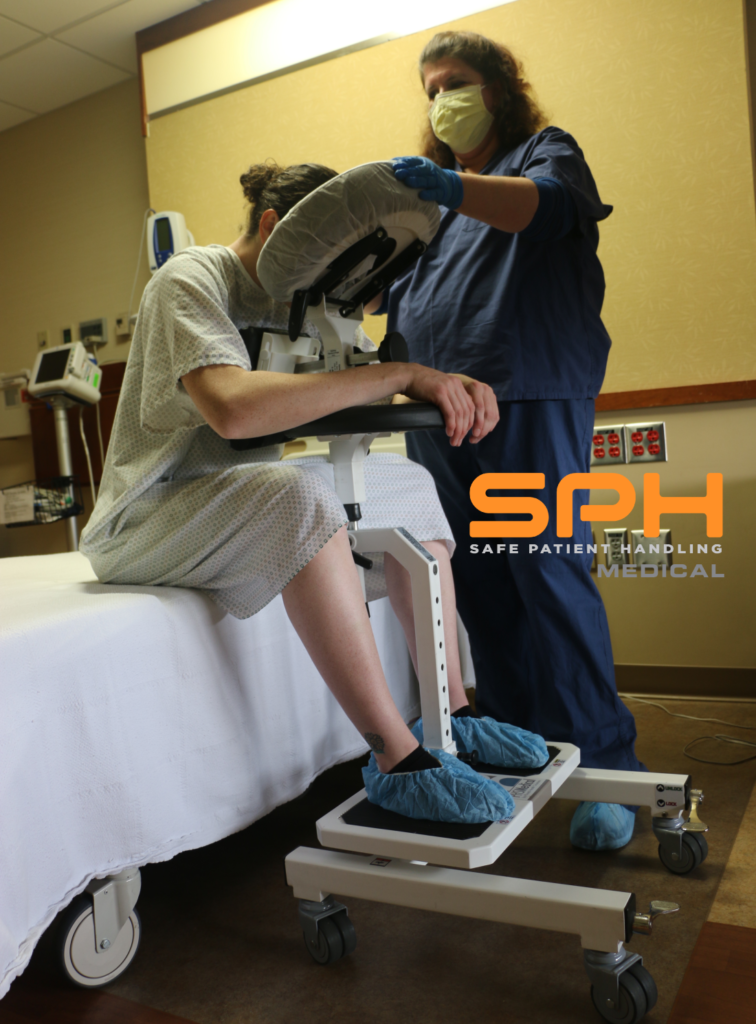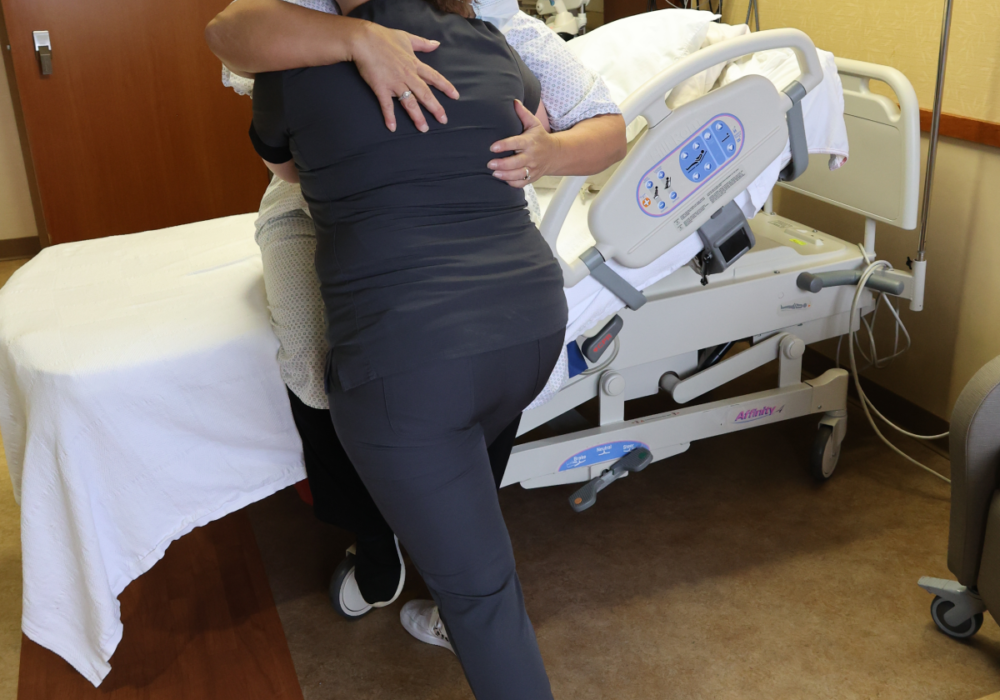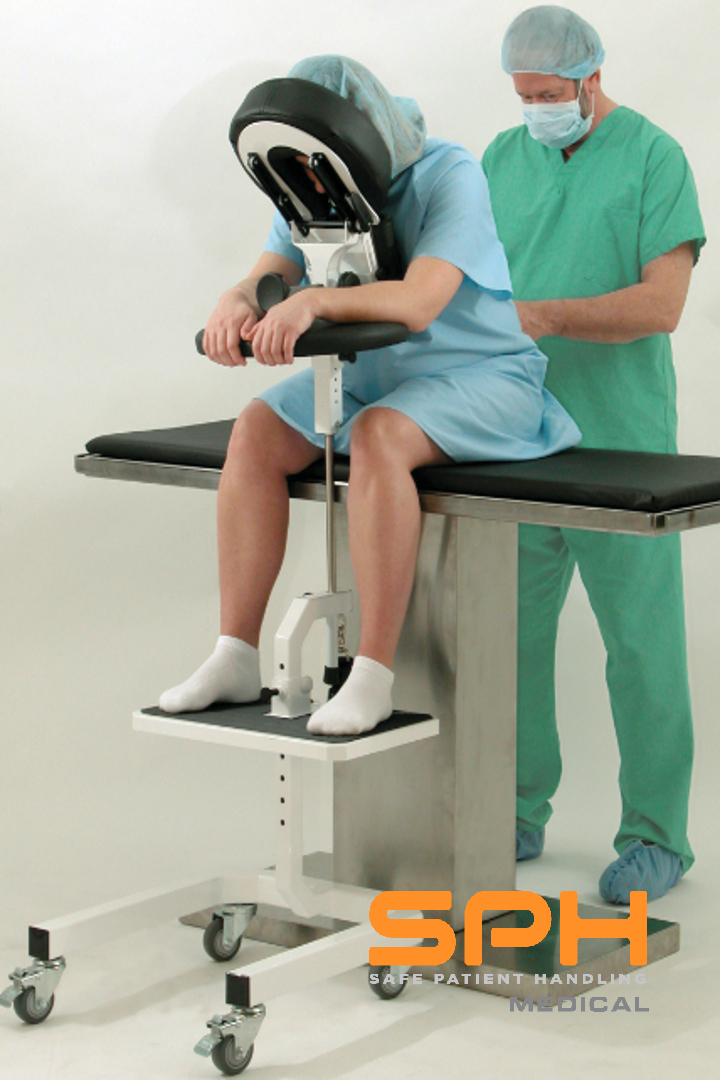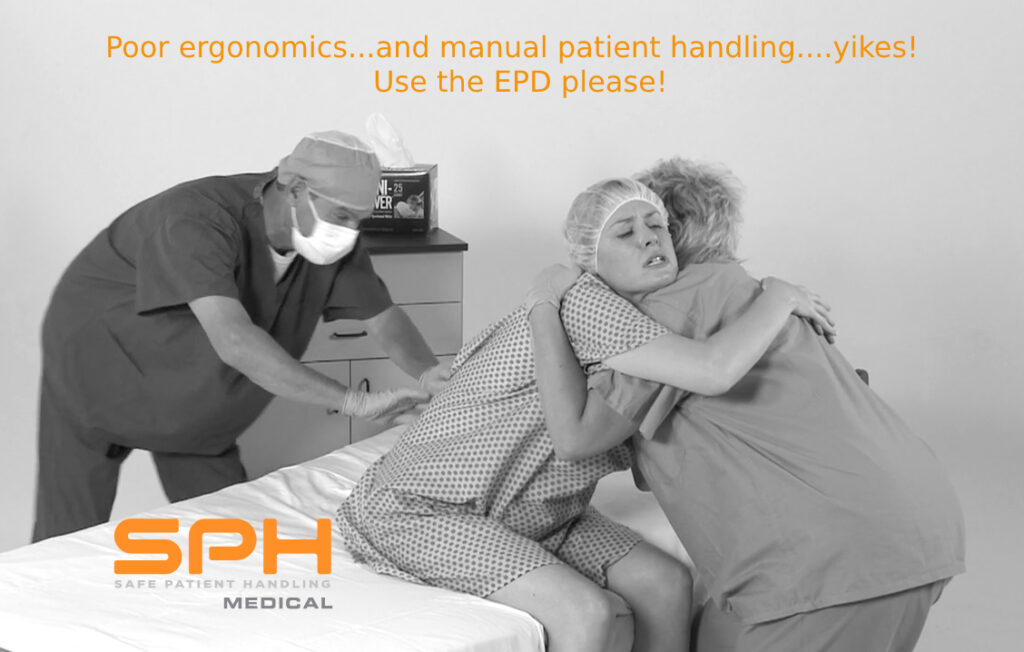Epidural positioning devices are making it much easier, more comfortable, and safer for patients while also improving safety for and medical professionals during epidurals or spinal blocks. Whether it’s a soon-to-be mother in the labor and delivery unit or a patient being prepped for a total knee replacement in the surgery department, an epidural chair can make all of the difference.
 What is an Epidural Positioning Device?
What is an Epidural Positioning Device?
Known as an EPD for short, this medical device is intended to help optimally position a patient in the ideal position to administer spinal anesthesia. The epidural chair places patients in a seated, well-supported, forward leaning position to promote easy access to the lumbar, thoracic, and cervical areas of the spine. It provides an adequate level of support for patients of all different sizes and weights. This flexed spine position enables optimal access for the anesthesiologist.
What Makes an EPD Great for Patients Epidurals and Spinal Blocks?
Patients who opt for epidural pain relief can greatly benefit from having their epidural administered while they’re in an epidural chair. Traditionally, patients are supported via a stack of pillows propped up on a bedside table with wheels that don’t lock and are held in place by nurses. While this offers some level of support, patients feel more comfortable being supported by a solid chair structure.
If a patient faints or moves unintentionally, without using the EPD, the nurse has to catch the falling patient. The epidural chair provides the necessary safety and support for the patient and eliminates the manual handling required by nurses. Of course the EPD prevents them from falling to the floor and become injured. This makes using these chairs the best way to offer optimal safety for patients who are undergoing an epidural in the labor and delivery unit or a spinal block in the surgery department.
How are EPDs Beneficial to Medical Staff That Perform Epidurals?
Traditionally, patients who need to undergo epidural pain relief will require multiple nurses to hold them in place during the procedure. Nurses have to bear the weight of the patient and be capable of quickly responding to any unexpected responses, like fainting or jolting movements.
This puts nurses at risk for minor and severe musculoskeletal injuries. An epidural positioning device works to take that strain off of the nursing staff and allows the chair itself to support the majority of the patient’s weight. This means fewer nurses are needed to handle the patient during this particular medical procedure. The fewer nurses involved, the more efficiently the nursing staff can work to provide patient care to all patients on the unit. The EPD provides a new standard of safety in the hospital. With the EPD nurses can work more efficiently in a repeatable process that improves both nursing safety and patient safety.
More Epidural Pain Relief Will Be Requested by Patients
As researchers commonly pour through statistics to learn more about spinal anesthesia techniques and trends that lead to improved patient outcomes, one fact has become increasingly clear. According to a published medical article in Anesthesiology, the number of women who opt for epidurals during delivery has increased significantly by 10% from 2008 to 2018.
It’s commonly thought that the rise in patient education about the birthing process has led many pregnant women to ask for this form of spinal pain relief. As education levels continue to rise, it’s predicted that the percentage of women opting for epidurals during delivery is going to increase even more.
With more epidurals being requested for birthing deliveries and spinal blocks for specialized ortho surgeries, it’s more important than ever before to invest in an EPD. This medical device will go a long way in creating a safer environment for both your patients and nurses alike.



